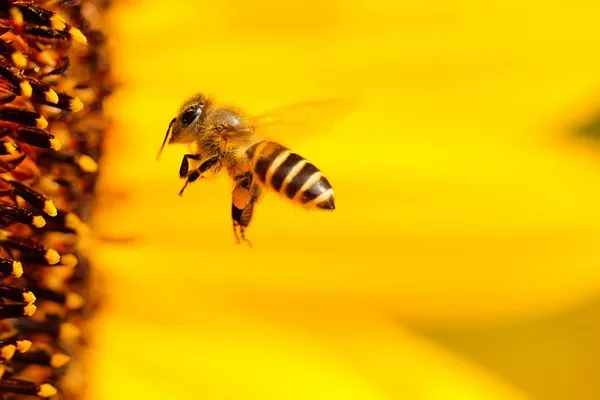Bees, those tiny yet vital pollinators, play a crucial role in our ecosystem and food production. As concerns about their declining populations grow, many gardeners are seeking ways to support these essential insects by planting bee-friendly flowers. But what exactly makes a flower bee-friendly? In this comprehensive guide, we’ll explore the characteristics of bee-friendly flowers and provide a diverse selection of species to consider for your garden.
Understanding Bee-Friendly Flowers
Before delving into specific flower species, it’s essential to understand what makes a flower attractive and beneficial to bees. Bee-friendly flowers typically possess certain characteristics that make them attractive to these pollinators:
1. Abundant Pollen and Nectar: Bees rely on pollen and nectar as their primary sources of food. Flowers with ample pollen and nectar reserves are highly attractive to bees, providing them with the energy and nutrients they need for survival.
2. Single Petal Flowers: Flowers with single petals, rather than double or complex blooms, are easier for bees to access. These simpler flowers provide better visibility and allow bees to access the nectar and pollen more efficiently.
3. Bright Colors: Bees are attracted to bright colors, particularly shades of blue, purple, yellow, and white. Flowers with vivid hues act as visual cues, guiding bees to their nectar and pollen-rich rewards.
4. Long Blooming Periods: Flowers that bloom for an extended period provide a consistent food source for bees throughout the seasons. These long-blooming plants ensure that bees have access to essential resources for an extended period, supporting their health and population.
5. Native Species: Native plants are well-adapted to the local environment and often have symbiotic relationships with native bee species. By incorporating native species into your garden, you can provide crucial habitat and food sources for local bee populations.
Top Bee-Friendly Flowers for Your Garden
Now that we understand the characteristics of bee-friendly flowers let’s explore a diverse selection of species to consider for your garden:
1. Lavender (Lavandula spp.): Known for its fragrant blooms and vibrant purple flowers, lavender is a favorite among both gardeners and bees. Its long blooming period, abundant nectar, and easy accessibility make it a top choice for supporting bee populations.
2. Sunflower (Helianthus annuus): With their large, showy blooms and abundant pollen and nectar reserves, sunflowers are irresistible to bees. These cheerful flowers attract a wide variety of bee species and add a splash of color to any garden.
3. Bee Balm (Monarda spp.): As the name suggests, bee balm is a magnet for bees and other pollinators. Its tubular flowers are rich in nectar and bloom for an extended period, providing a reliable food source for bees throughout the summer months.
4. Cosmos (Cosmos spp.): Cosmos flowers are not only beautiful but also incredibly bee-friendly. Their daisy-like blooms come in a variety of colors and provide ample nectar for visiting bees. Cosmos is easy to grow from seed and thrives in a wide range of soil types.
5. Black-Eyed Susan (Rudbeckia hirta): These cheerful flowers feature golden-yellow petals with distinctive dark centers, making them highly attractive to bees. Black-eyed Susans bloom from summer to fall, providing a consistent food source for bees throughout the growing season.
6. Salvia (Salvia spp.): Salvia, or sage, is a versatile plant that comes in many varieties, all of which are highly attractive to bees. Whether you choose culinary sage for your herb garden or ornamental varieties for your flower beds, salvia is sure to draw in plenty of pollinators.
7. Penstemon (Penstemon spp.): Also known as beardtongue, penstemon produces tubular flowers that are perfect for attracting bees. These native North American plants come in a variety of colors and bloom from spring to summer, providing essential food for early-season bees.
8. Coneflower (Echinacea spp.): Coneflowers are not only beloved for their medicinal properties but also for their ability to attract bees and butterflies. Their daisy-like blooms feature prominent central cones filled with nectar-rich florets, making them a favorite among pollinators.
9. Phacelia (Phacelia spp.): Phacelia, also known as bee’s friend, lives up to its name by providing a valuable food source for bees. Its purple-blue flowers are highly attractive to a wide range of bee species, and its fast growth makes it an excellent choice for filling in empty spaces in the garden.
10. Catmint (Nepeta spp.): Catmint is a favorite among gardeners and bees alike. Its aromatic foliage and spikes of lavender-blue flowers are irresistible to bees, making it a valuable addition to any bee-friendly garden.
Conclusion
By incorporating these bee-friendly flowers into your garden, you can create a vibrant and sustainable ecosystem that supports the healthand vitality of bee populations. Whether you have a small balcony garden or a sprawling backyard, there are plenty of options to choose from when it comes to selecting bee-friendly flowers. So roll up your sleeves, grab your gardening gloves, and get ready to welcome an abundance of bees into your outdoor space!


